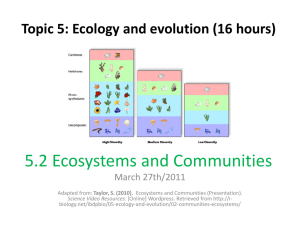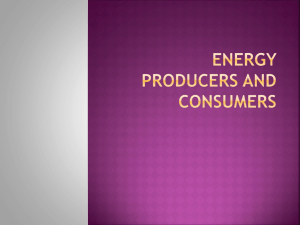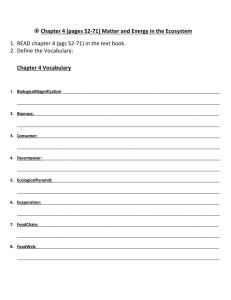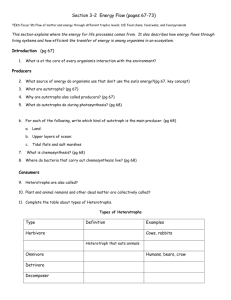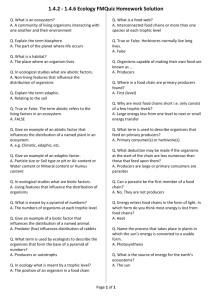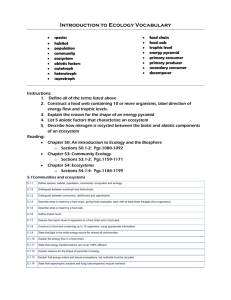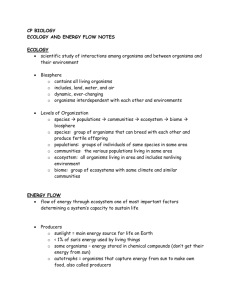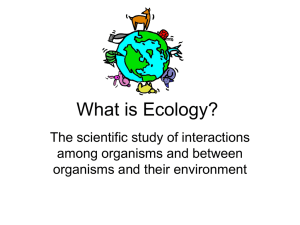What is Ecology Powerpoint
advertisement
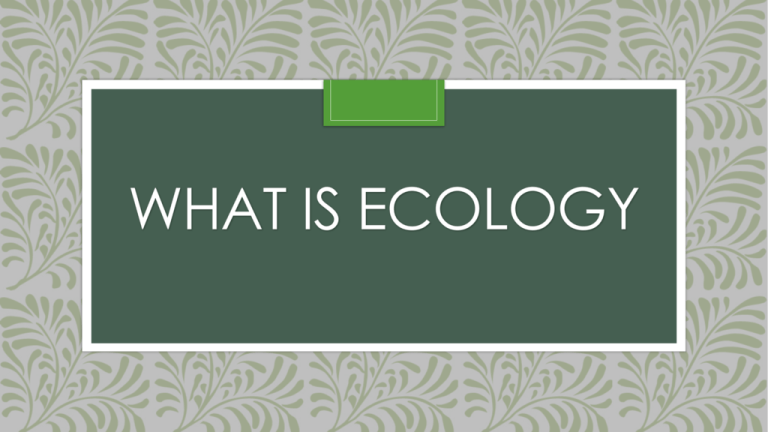
WHAT IS ECOLOGY Studying Our Living Planet • Biosphere: All life on Earth and the areas they exist • Species: A group of similar organisms that produce fertile offspring • Population: Group of individuals in the same species living in the same area • Community: Different populations living together in the same area • Ecosystem: Organisms living in the same place + their physical environment • Biome: Group of ecosystems with similar climates and organisms Science of Ecology • Ecology: Study of interactions between and among organisms + their environment • Eco = House • Ecology and Economics • Humans: Interactions based on money and trade • Animals: Interactions based on energy and nutrients Biotic and Abiotic Factors • Biotic factors: biological influences • Example: Bullfrogs • • • • Algae eaten as a tadpole Insects eaten as an adult Herons that eat bullfrogs Other species that compete for food and space • Abiotic factors: physical influences • Example: Bullfrogs • Water availability • Temperature • Humidity ENERGY, PRODUCERS, AND CONSUMERS Primary Producers • Without energy, there is no life! • Organisms do not create energy, they only use it • Sunlight is the ultimate source of energy for most living things • Some organisms use inorganic chemical instead • Algae, some bacteria, and plants are the only organisms that convert sunlight to consumable energy Autotrophs • Use the sun or chemical energy to produce food • Primary producers: First producers of energy-rich compounds that are used by other organisms • Essential to the biosphere! Energy from the Sun • Most primary producers use photosynthesis • Capture light energy which powers chemical reactions • Converts carbon dioxide and water to oxygen and carbohydrates • Adds oxygen to the atmosphere • Removes carbon dioxide from the atmosphere • Life without light • Deep sea ecosystems depend on chemosynthesis • Convert inorganic materials to produce carbohydrates Consumers • Heterotrophs: Animals, fungi, many bacteria that get energy from other organisms • AKA: Consumers Carnivores Herbivores Omnivores Consumers Scavengers Decomposers Detritivores Eat carcasses of animals that have died naturally or been killed by other animals Chemically break down organic matter and produce detritus Eat detritus and detritivores ENERGY FLOW IN ECOSYSTEMS Food Chains • Energy flows in a one-way stream from producers to consumers • Food Chains • Steps in which energy transfers by eating and being eaten Food Webs • Transfer of energy is more complicated when organisms eat different things • When transfer of energy can’t be described by a simple chain, it is described as a web • Food chains are found within food webs • Decomposers and detritivores help recycle energy in a food web Trophic Levels • Trophic level: Each step in a food web • Primary producers are the first trophic level Ecological Pyramid • Shows the amount of energy or matter within a trophic level • Pyramid of energy: Amount of energy available at each trophic level • Pyramid of biomass: Total amount of living tissue in a trophic level • Pyramid of numbers: Number of individual organisms at each trophic level
